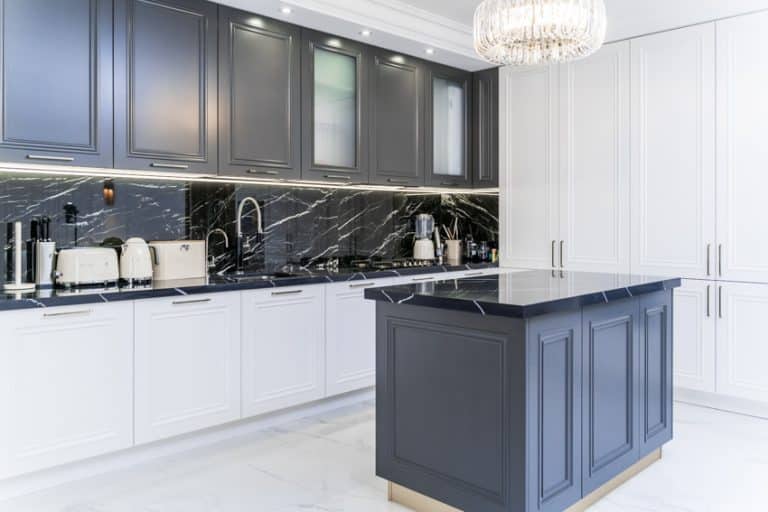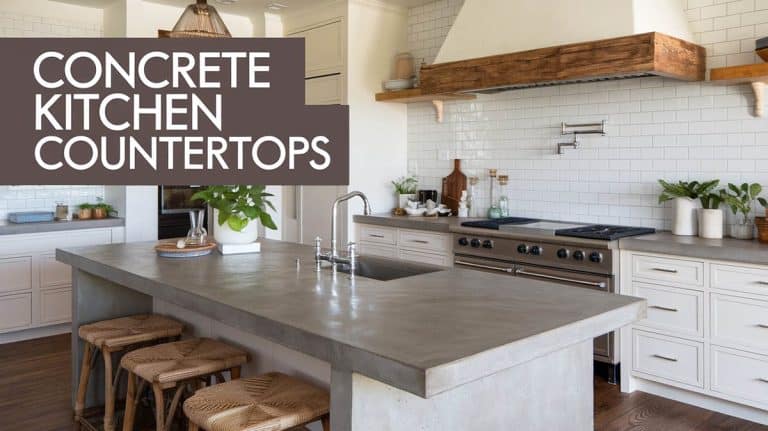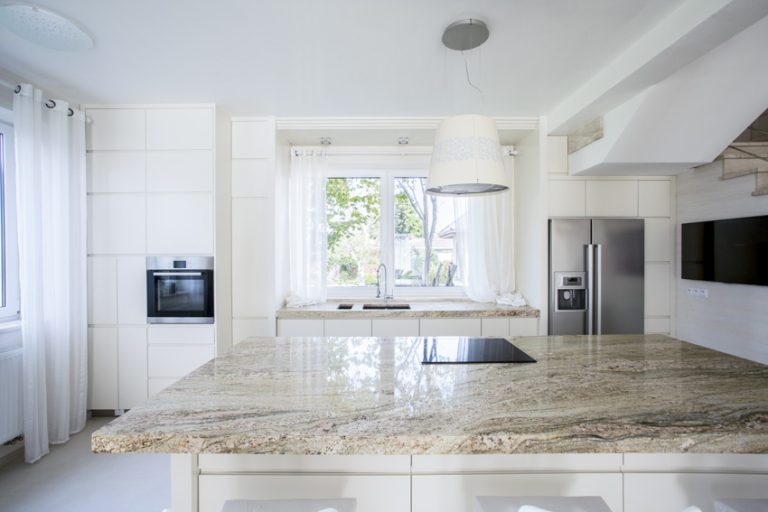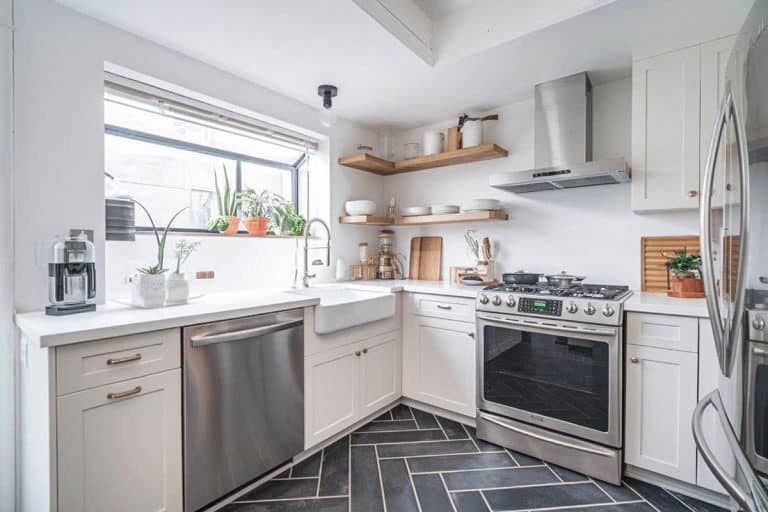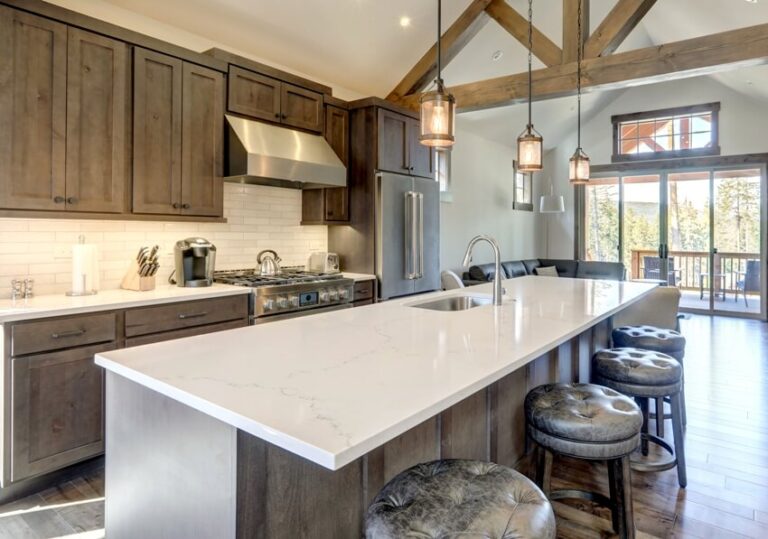10 Types Of Blenders With Their Uses & Pros and Cons
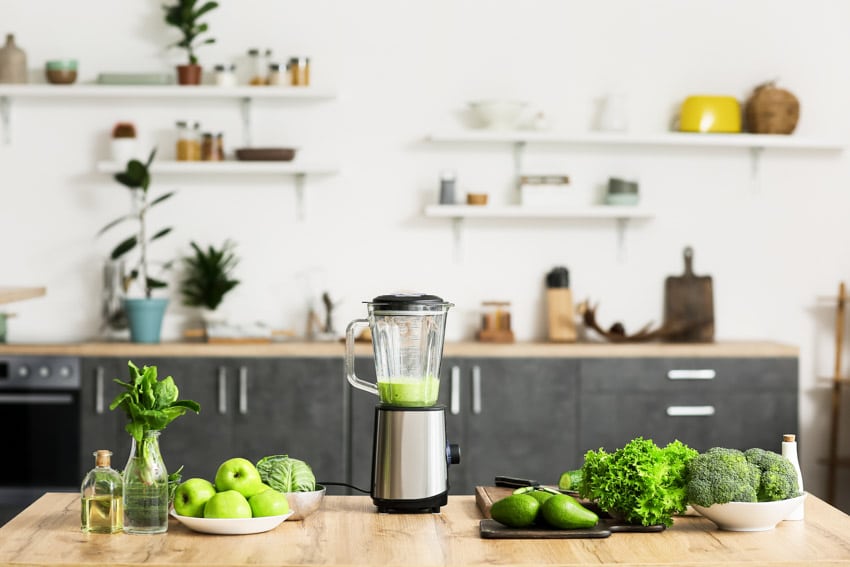
There are many types of blenders available and each has its own strengths and weaknesses. But more importantly, they have certain differences wherein, although subtle, can really play an important part in your buying decision. When looking for a blender to buy, you ultimately need to think about the end use of the product to get the results you need. You should consider how frequently you will use it, what types of ingredients you will be blending, whether you will be throwing them in one at a time or all at once, and so on.
If you are looking for a blender so that you can make those perfect smoothies at home, then you need to keep an eye out for something that’s powerful. However, if you just want one for basic soups and baby food, then perhaps you only need a simple or more affordable blender at the end of the day.
Countertop Blender
Countertop blenders or kitchen blenders are the most common types of blenders you’ll find in the market these days. They can be seen in kitchens all over the world, both residential and commercial.
The names stems from the fact that they usually sit right on top of the kitchen countertop. They usually have the actual jar for the blender, and they have lids that keep the contents in and prevent them from spewing all over the place once the blender has been turned on.
Countertop blenders are fairly reasonable. They have capacities that accommodate roughly around 2 liters or so. This makes them ideal for making huge batches of smoothies and juices at home.
They are also equipped with the amount of power that’s necessary to crush ice, knead heavy dough, and other functions that less powerful blenders just won’t be able to do.
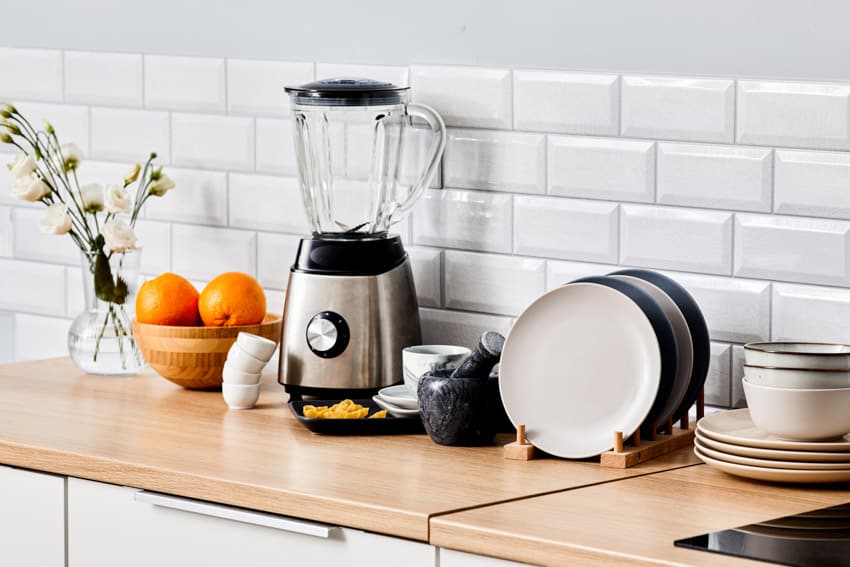
Pros of countertop blenders: Countertop blenders are well known for mixing the ingredients in quite efficiently and thoroughly. They are very versatile. They can blend literally anything and everything from food to fruits, and even ice.
They also allow you to make your food and other blended recipes in huge batches because of their high capacity. You can play around with a lot of variable speeds. If you are in need of powerful blenders, a countertop blender most definitely will not let you down.
Cons of countertop blenders: One major downside to countertop blenders is that they can take up a lot of precious space in your kitchen. They can be quite bulky. This is alright if you have a fairly spacious kitchen but if you happen to be dealing with limited or cramped space, this can be a real challenge to keep and maintain.
Also, because of their big capacity, there’s always the risk of accidentally blending objects such as spoons, knives, spatulas, and other non-food ingredients by accident. This can cause permanent damage to the blender.
And of course, there’s the issue of countertop blenders being difficult to clean. However, the more modern ones can be taken apart and thrown into the dishwasher for hassle-free cleaning and maintenance.
Kitchen Systems
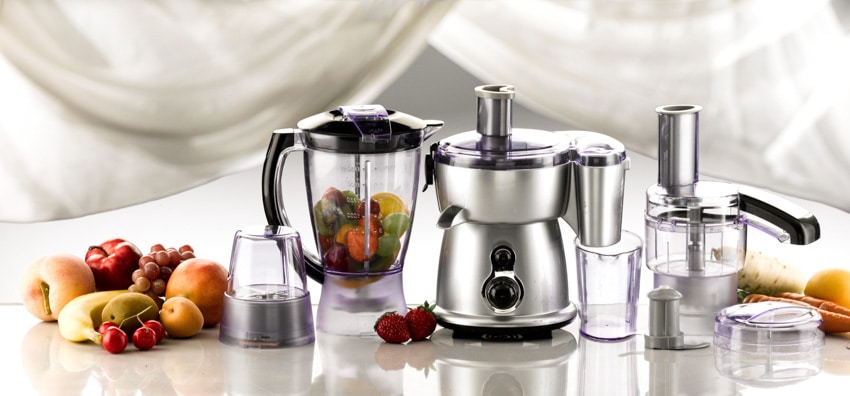
Kitchen systems are more professional takes on the blender combo appliance model. You are probably thinking that since you aren’t a professional chef and you don’t have any commercial use for it, a kitchen system won’t really do much for you but you couldn’t be more wrong when it comes to this.
Kitchen systems can be great for pros and beginners alike. They’re awesome because they come in with a food processor, mixer, and blender all in one appliance. What’s really great with a system like this is that it is relatively easy to use. Sure, there’s bound to be a learning curve if you happen to be new at this but it isn’t impossibly difficult to get the hang of it.
Kitchen systems can come with a wide array of presets as well as programs that can let you create anything to everything from smoothies, to chopped or soup recipes, to frozen drinks, to doughs, and so much more with nothing more than a touch of a button.
If you aim to save time, cater to large portions of food, and maximize your kitchen countertop space; a kitchen system just may be your best candidate as a blender appliance so far. They are also oftentimes dishwasher safe which means that cleanup will be a breeze.
As expected, they’re much larger than your regular blenders but then again, you have to keep in mind that you are getting the functionality of multiple types of appliances all in one with this unit.
Pros of kitchen systems: Kitchen systems are insanely versatile. They can be used for a wide variety of food preparation processes from blending, to chopping, to whisking, mixing, juicing, pureeing, and so on. A lot of these systems come with extra cups and jars. They make your food prep process even easier and so much more convenient.
Cons of kitchen systems: As mentioned earlier, these units are not small so they can take up a lot of countertop space. This is something that you really need to allot a special area in your kitchen for. And of course, you also need to take into account that there is bound to be a learning curve in how you operate your kitchen system.
You need to make sure that you take the time to familiarize yourself with it. Basic blenders are usually plug and play but this isn’t the case with kitchen systems. You really need to sit down and read through the manual to get it right.
Specialty Blender
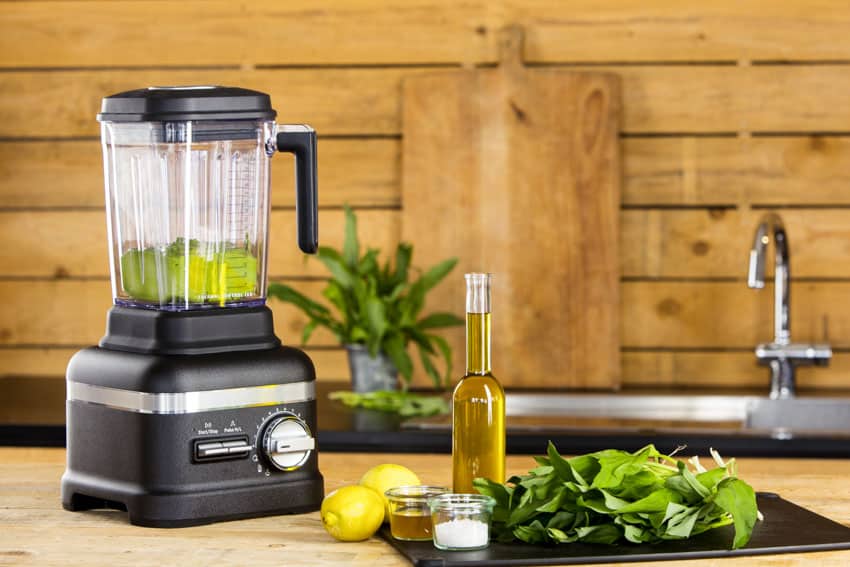
A specialty blender is a type of appliance that’s built specifically for a unique or particular purpose. At the same time, it can function accordingly as a regular or basic blender. There are multiple types of specialty blenders out there.
There’s a soup blender that allows you to create smooth soup recipes, in either cold or hot temperatures. There are usually heating sources right under the blender’s jar that allow you to simmer, sauté, boil, and so on. And this isn’t limited to soups. You can get this done for hot drinks that you would like to mix, along with sauces, and so on.
Vacuum blenders are another type of specialty blender that are equipped with pumps. These pumps remove the air right from the blending jar when the appliance is turned on. This removes aeration from the ingredients you’re blending out.
Smoothies are usually more flavorful and it stops them from separating the moment they get refrigerated. This is great if you specifically want to minimize the oxidation process in your fruits and vegetables. There are a ton of other specialty blenders available in the market these days but you should pretty much get the gist of what they’re all about.
Pros of specialty blenders: A major upside to this is that you are able to get your hands on a specialty appliance that does exactly what you need it to do – and it does it very well. This is all on top of the fact that you can get it to function like a regular blender.
Cons of specialty blenders: The downside to this though is that they will cost you a few extra bucks on the side and it isn’t very attractive if you happen to be running on a tight budget.
Smoothie Blenders
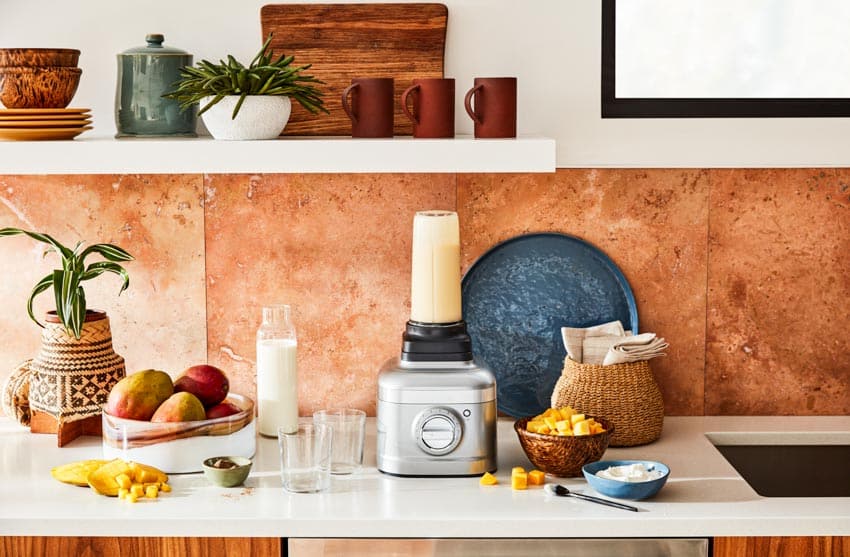
A smoothie blender doesn’t really have that much in terms of differences from a regular blender. It does what every blender does – which is to blend the ingredients together. the main difference is that it has a much smaller capacity, usually running up to just a single serving or so.
The purpose of this is to limit or cut down on food wastage. They may also come in fairly portable containers or jars, some allowing you to unscrew the lid, and bring the jar with you as an actual personal container.
Pros of smoothie blenders: Its main advantage is that it is convenient, easy to use, and something that you can bring along with you wherever you go. You also get to cut down on food waste and portion your smoothie ingredients out more efficiently.
Cons of smoothie blenders: It oftentimes lacks the power that regular countertop blenders have. Smoothie blenders also don’t always have enough power to crush ice as well so that’s another thing to look into.
Immersion Blender
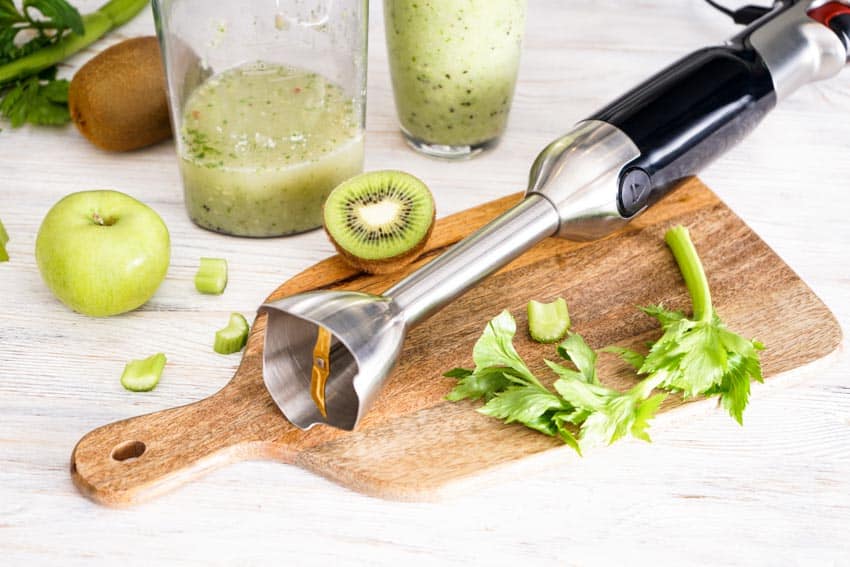
An immersion blender is more popularly known as a stick blender. It is something that you can easily just stick into a pot of hot soup or something similarly cooking in a casserole on your kitchen stove.
They are impressively easy to handle. And the best part of it all is that you can just stick them in a pot with the fire on without ever having to worry if it will get damaged or so because it will come out just dine. They’re also great for whipping up protein shakes from powdered forms.
Immersion blenders are budget-friendly. You get a great blender without having to shell out a lot of money in the process. At the same time, they are also quite easy to clean as you can just stick them in a dishwasher and be done with it. These blenders usually offer 2 speeds or more and are known to be quite durable.
Pros of immersion blenders: Immersion blenders are easy to use at home, even if you happen to be a novice with blenders. Their biggest strength is that you can stick them in a pot that’s under fire which means you can easily blend out the ingredients without running any risk of scalding or getting burned.
They are convenient to store as they take up very little space. They are also dishwasher safe which means that they are easy to use and then clean afterward.
Cons of immersion blenders: Immersion or stick blenders have blades that are exposed. This means that you will need to practice extra care while using it. You also need to make sure that you exert and maintain pressure all throughout the time that you’re using it in order for it to function effectively.
And although this type of blender is great for soups and pureed food, it doesn’t provide the kind of smooth finish that a higher-powered blender will be able to give you at the end of the day.
Blender Bottle
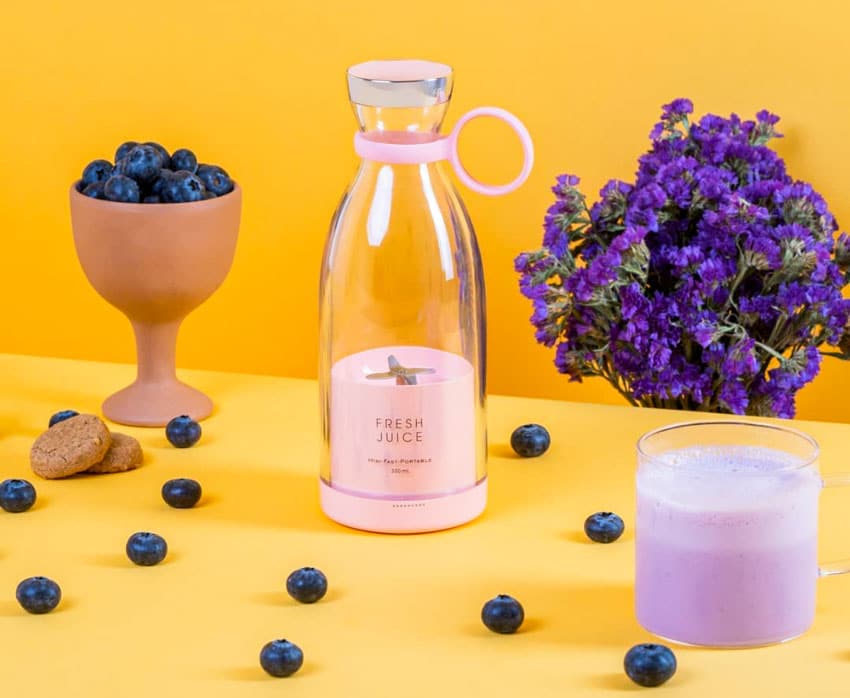
A blender bottle is very useful. It’s particularly great for mixing up pre-workout drinks, protein shakes, and other smoothies without an actual full-sized blender. If you live alone, or if you just happen to be on the go all the time, it might work better for you.
They are manual and they aren’t actually plugged into electricity. As a matter of fact, they aren’t technically considered as a home or kitchen appliance at all. It’s essentially a bottle that has a wire ball inside it. The wire ball runs the mechanism to get the bottle to mix the ingredients in the cup while you shape it up.
Pros of blender bottles: It’s great for people who are constantly busy or mobile. It doesn’t require electricity. It’s great for single-serve settings. And of course, it produces smooth protein and pre-workout shakes in a matter of seconds.
Cons of blender bottles: You can’t really add any solid ingredients. They all need to be in powder form so you are limited to powder forms such as whey protein and other similar supplements.
Its main purpose really is just for the protein shake or supplement side. You can’t really make smoothies from scratch off of it so that’s one of the major cons right there.
Single-Serve Blender
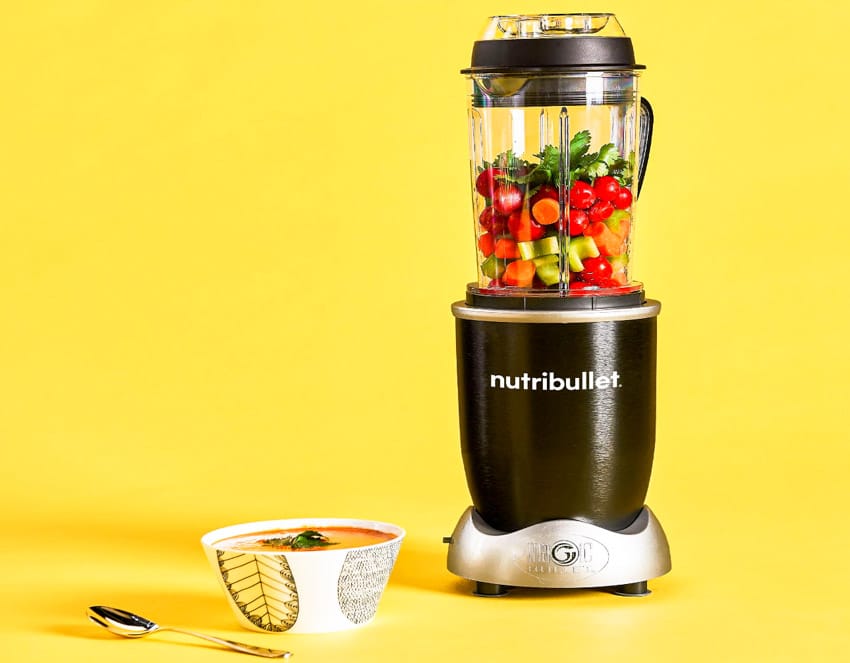
Single-serve blenders are also called personal blenders. If your main purpose for getting a blender is so that you can primarily make smoothies at home, then a single-serve blender will work perfectly for you. It is portable, ideal, is a quick solution, and is something that you will be able to bring with you anywhere you may go.
This type of blender is best used for liquid recipes. Single-serve blenders may also be nicknamed as bullet blenders. They are also suitable if you want to make baby food. They offer multiple variable speed settings, and are oftentimes equipped with stainless steel blades, making them durable and easy to clean.
Pros of single serve blenders: The main strength of a single serve blender is that it can deliver fresh smoothies and juices in a small amount of time. If you are constantly looking for something that’s quick and convenient, then this is might just be it.
They take up very little of your counter space, and they blend your ingredients out at very high speeds, which means you get the results almost instantly. The blades are also oftentimes protected which means that they are relatively safe to use, even for kids and the elderly.
Cons of single serve blenders: Single serve blenders come in all sorts of forms and sizes in the market these days but a word of caution, not all of them will have the required amount of power for you to be able to create smoothies that will turn out to be free from lumps.
There may also be issues related to leaking as these blenders don’t really have the capacity to accommodate large amounts of ingredients. You also need to pay attention to how tightly you close the lid when you’re closing the blender out or you’ll end up with your ingredients spewing everywhere.
Stand Mixer
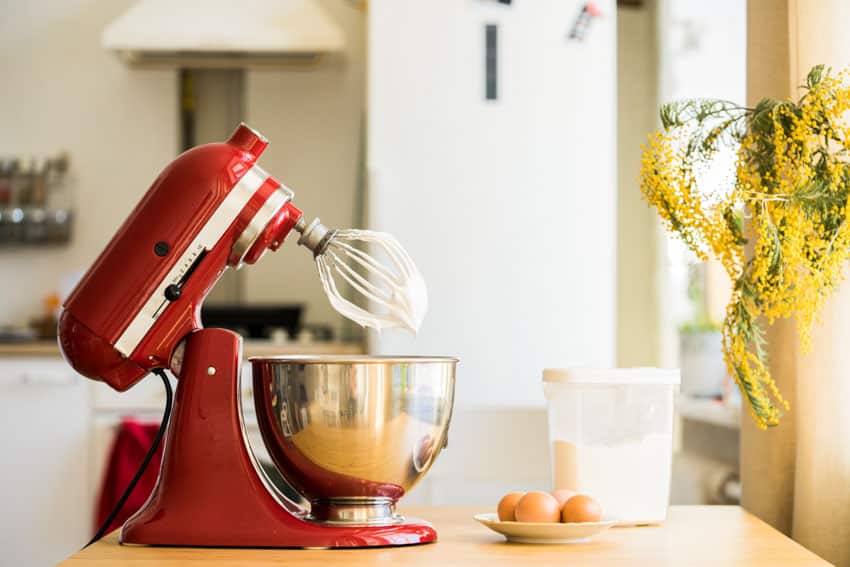
Stand mixers are mainstays in the kitchen and it’s pretty understandable to see why. They are usually able to take on fairly heavy duty tasks and can do literally everything from basic blending, to mashing, to kneading, whisking, incorporating ingredients together, and so much more than that.
It has a motor that is so much stronger than any regular blender and they usually have stable bases with different attachments for different types of functionalities.
Pros of stand mixers: Stand mixers are very versatile. They can multitask and can fill various needs and purposes as you see fit. They require less effort to operate and they can usually get the job done in the quickest possible time.
A stand mixer can get the heavy jobs done for you with just the flick of a button. They’re quite powerful and sturdy. You are almost guaranteed that it won’t fall off base or overheat even during prolonged use. And of course, you are guaranteed a mess-free operation every single time.
Cons of stand mixers: Stand mixers are a real challenge to clean, though. Because they come with so many attachment types, cleaning them properly can be tricky. Make sure that you get stand mixers that have dishwasher-safe attachments to make it less laborious to use.
They are also understandably expensive. They will definitely cost you so much more than your regular blender. And of course, they aren’t compact. They’re large and heavy and they will take up a lot of your kitchen space.
Commercial Blender
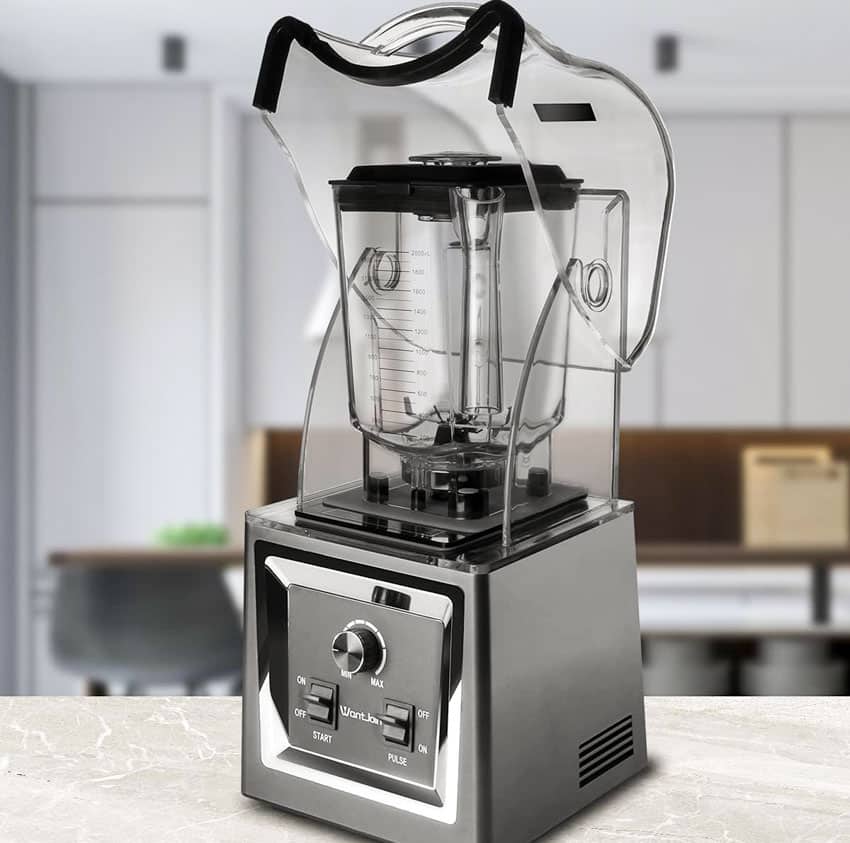
A commercial blender can be perfect for you if you’re looking for a powerful blender that has tons of commercial settings. This is for the more advanced blender user who is looking for specific traits in a blender that a common blender just won’t be able to deliver.
Commercial blenders offer different high speeds and allow you to blend anything and everything, from ice to hard and soft ingredients and so on. This is an extremely heavy-duty lender.
What this means is that if you are looking into creating recipes that have bigger or larger quantities, your best chance is to opt for a commercial blender. They also typically come with all of the bells and whistles from intuitive touch control, to preset programs, and so on.
Pros of commercial blenders: The main advantage of a commercial blender is the fact that it is a very powerful kitchen appliance. You can blend and create just about anything you can think of with little to no limitations at all. You are guaranteed smooth and perfectly blended consistency every single time.
And although they are called commercial blenders, they are not sectioned off to commercial use alone. If you have a large family or are constantly having people at home and you need huge batches of food, this can work well for you.
You don’t need to operate commercially to have a need to invest in a commercial blender at the end of the day. You will also be able to use it multiple times in a day without worrying about overheating it.
Cons of commercial blenders: The main downside of a commercial blender is the upfront cost. It can be very expensive. If you aren’t really using blenders frequently and consistently, then perhaps you can make do with a lower-budget blender instead of a high costing commercial one.
It can also be quite bulky and difficult to clean. More often than not, commercial blenders don’t really fit right into residential dishwasher dimensions because of their large size and capacity. It can also be quite difficult to store because of the amount of space it takes up.
Frozen Drink Machine
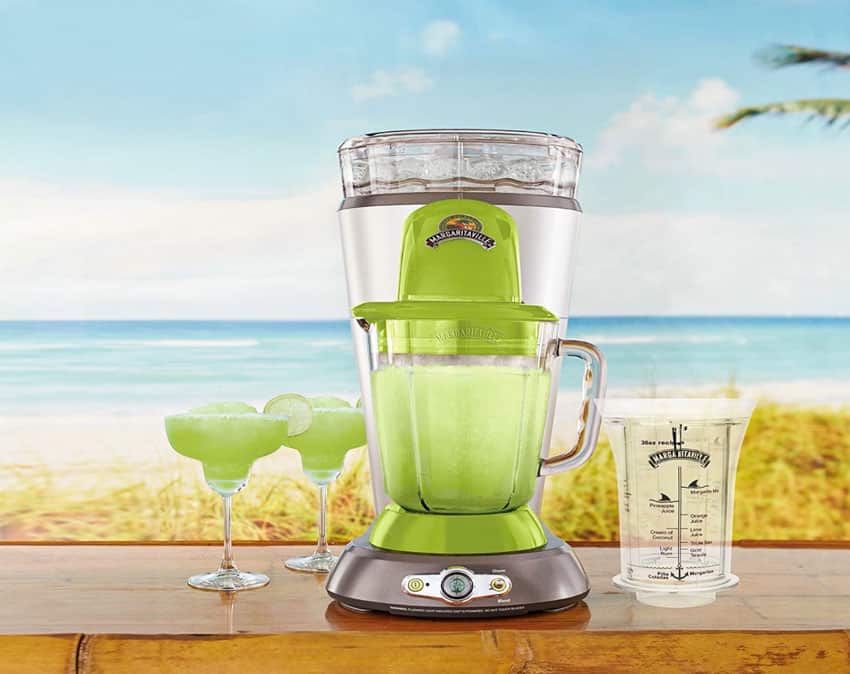
A frozen drink machine is pretty much a commercial appliance but in the event that you want to have one in your home, that’s great too. What it does is that it is designed to quickly freeze any liquid beverages you might have, making some sort of slushie-like beverage in the process.
What you ultimately come up with is a smoothie that doesn’t separate from the ice. They can be made out of carbonated or noncarbonated ingredients. It all depends on what you actually include in the recipe mix.
From a commercial standpoint, it’s great to have and all that. There will be even instances wherein you can seriously think about this as a serious money-making appliance. Frozen drinks are quite profitable, after all.
However, coming from a residential standpoint, we don’t really see this fitting right into practical kitchen sensibilities, even if you happen to have a huge household to run. The caveat to this is if you want a home bar appliance to make drinks for entertaining or large parties then it makes sense.
Blender Features
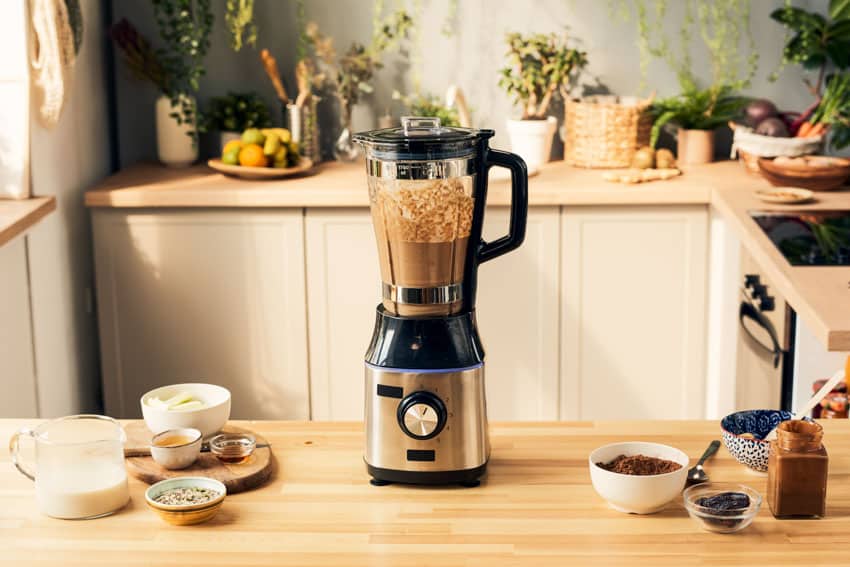
There are a lot of different blender features for you to take a look at. In a world of options, this can turn out to be a little too overwhelming, especially for someone who’s new to blenders in general. Here are some of the features that you ought to keep an eye out for:
Multiple Attachments: Multiple attachments in a blender are great for when you are trying to get other functionalities other than just to blend ingredients. A basic blender will typically have circular or half-crescent blades that rotate at high speeds in order to get the ingredients blended out.
Other attachments can have whisks, for kneading, and so on. This can convert your kitchen appliance into something so much more versatile and multifunctional.
Variable Speed: One of the things to really look out for is being able to start your blender out slowly and then being able to increase its speed eventually. This is great both for the quality of the output as well as for ensuring that you don’t end up stressing the motor of the blender out too much.
This will allow you to play around with it, and add in ingredients as you go along. There will be a lot of instances wherein you don’t need the ingredients to be liquidized or pureed all at the same time and variable speed is really essential when it comes to this.
Cordless: This isn’t really a traditional blender feature but it’s something that has slowly been becoming more and more popular over the years. Cordless blenders are easy to carry around. They’re rechargeable.
Ice Crushing: The ice crushing feature is fairly similar to the pulsing feature. It allows you to instantly stop or start the blades so that you will be able to easily chop or blend the ice out with the rest of your mixture. This is also great for when you are trying to cut up large chunks of ice without stressing the blender’s blades out too much during the process.
Juicing: The juicing function is great to have in a blender. Blenders usually function in a way wherein you dump all of the ingredients in, they blend it out in a mush, and then they come off smoothly. Juicing is a totally different type of function. It works by separating the pulp of the organic material from the liquid content or the juice, so to speak.
It converts it completely into a liquid content instead of a smoothie-type viscous liquid that has the fibers ground up. Some fruits and vegetables are nice to have without the extra pulp.
Getting a blender that can double over as a juicer is a must-have for every serious health enthusiast. Juicing has tons of benefits and is something that you should definitely consider.
Easy To Clean: If this isn’t a feature you’re keeping an eye out for, it should be. Blenders are very difficult to clean and maintain because the blades can be all over the place. What you need to keep an eye out for is a blender that you can safely stash in the dishwasher. This takes a majority of the cleaning problems and other issues straight away.
Low Noise: Blenders are notorious for the shrill mechanical noises they create while they’re on. This can be a bit bothersome in the mornings when you’re nursing a hangover, or when the other people at home are still sleeping.
Getting a blender that’s fairly quiet or not as noisy is a great feature to have. Thankfully, with the strides that we’re making with technology, this is a blender feature that you can easily find in some models.
Energy Star: Blenders that have energy star ratings mean that they are better compared to the regular products without the energy star rating. In order for an appliance brand to earn it, it must meet very strict requirements issued by the US Department of Energy. This usually means that the blender you bought is more efficient when it comes to using electricity or energy.
Smart Features/Recipes: Smart features in a blender can be from something as simple as having preset functions, a function that automatically shuts the blender down when the motor hits a certain temperature and is at risk of overheating, to so much more.
There may also be pre-programmed buttons that allow you to process the ingredients differently from making soups, to smoothies, to purees, to frozen drinks, to juices, and so on. It’s convenient and versatile to use and is definitely a few steps up compared to the regular or traditional blender at the end of the day.
Dispensing Spout: A blender equipped with a dispensing spout makes it really easy to pour the contents of the blender out. It minimizes spills and leaks. It makes for a far more efficient pouring function. You get to make sure that all of the contents that you end up blending actually end up in consumption at the end of the day.
Spills can be quite common so a dispensing spout really does come in handy although it might not sound like much it’s something that can definitely go a long way. Spills are a major hassle and thankfully, they are something that you can do without.
BPA Free: BPA stands for Bisphenol A. This is a grade of plastic that’s a combination of epoxy resins and polycarbonate. To say that a material is BPA-free would mean that Bisphenol A, which is an organic compound, was not used for the material.
According to research, exposure to BPA could end up causing issues with how the endocrine system functions. It is toxic and has been linked to harming or jeopardizing the immunity, reproductive functions, and in extreme cases, neurological problems such as asthma, Alzheimer’s, cardiovascular diseases, and so on.
Jar Materials
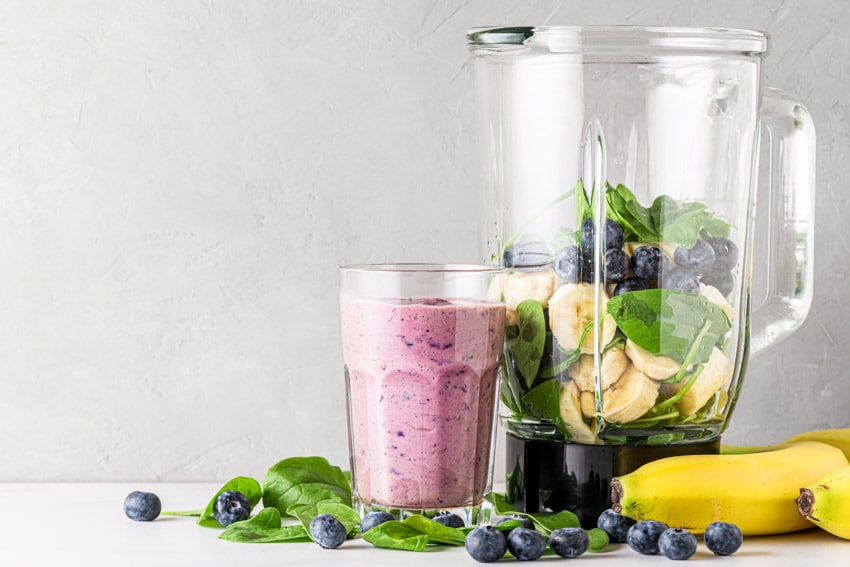
Blender jar materials are typically made out of the following materials:
Glass: This material is durable. Glass can stand the test of time. It doesn’t stain or easily discolor, despite including ingredients that are known to “bleed” or stain out. It also doesn’t absorb the smells and odors coming from pungent-smelling food ingredients.
Metal: Metal blenders are oftentimes made out of stainless steel material. This is the most expensive out of the blender types but it also happens to be the most durable. What’s great with stainless steel is that it can keep your cold smoothies and other mixtures colder for much longer.
The downside to this though is that it isn’t as transparent as glass or plastic so you would have to take the lid off in order for you to peer in and see what’s going on inside the blender bottle.
Plastic: Plastic is the cheapest or the most budget-friendly out of all of the blender jar materials so far. Plastic is easily sourced. It also happens to be chip proof and lightweight, especially for the high-quality ones.
Blender Power
Another thing you need to take into consideration is how much power the blender’s motor actually has. You ought to consider what you are planning to use the blender for. If it’s just to create single-serve smoothies and basic soups, you can always go with a bullet blender with a lower motor power.
However, if you want to have a more multifunctional approach with far bigger capacities because you constantly want to entertain or make food for friends and family, it would be smart to go with slightly more powerful blenders. It will save you time and money and it will minimize your frustrations further down the road.
Most blenders in the home range from 300 to 1000 watts. If you are primarily blending fruit for smoothies than 500 watts may be sufficient, however it’s recommended to go over 600 watts. If you are constantly blending ice you’ll want to buy a blender with a more powerful motor such as a 1000 to 1500 watt unit.
What Is The Best Blender Power Wattage
The average power wattage of a blender can range anywhere from 300 to 1,000 watts. It all depends on what type of blender you will actually need for your household.
Blenders that are categorized as high-powered usually start off at 1,000 watts and higher. This is considered to be a standard for average consumers these days. It’s because blenders with higher wattage will allow you to handle tougher foods, especially ice.
However, don’t be too quick to discount lower-powered blenders. They run on far less power, which means that in terms of cost, they have the quick upper hand. If you aren’t too keen on getting super smooth smoothies and you just want the basic blending function, a lower-powered blender actually isn’t a bad idea.
So ultimately, it all depends on how you intend to use your blender in the first place. However, to err on the side of caution, it would be best if you just get a high-powered one at 1,000 watts or more as it provides you with better flexibility on the ingredients that you will be able to blend out.
How Many Watts for Blender to Crush Ice
A blender that will have motor power that will be comfortable enough to crush ice with no apparent strain on it would be at a range of 1,000 to 1,500 watts. While lower-powered blenders at 300 to 500 watts do well as typical blenders, they don’t fare so well when it comes to crushing ice.
What Speed Should A Blender Be?
The general rule of thumb is that the higher the RPM is on a blender, the better its output will be. RPM refers to revolutions per minute. A good start would be at around 17,000 RPMs.
This is considered as fairly decent and you should be able to produce smooth enough soups and smoothies with this speed. However, higher grade blenders actually go up to RPMs as high as 31,000 or so.
Blender Sizes
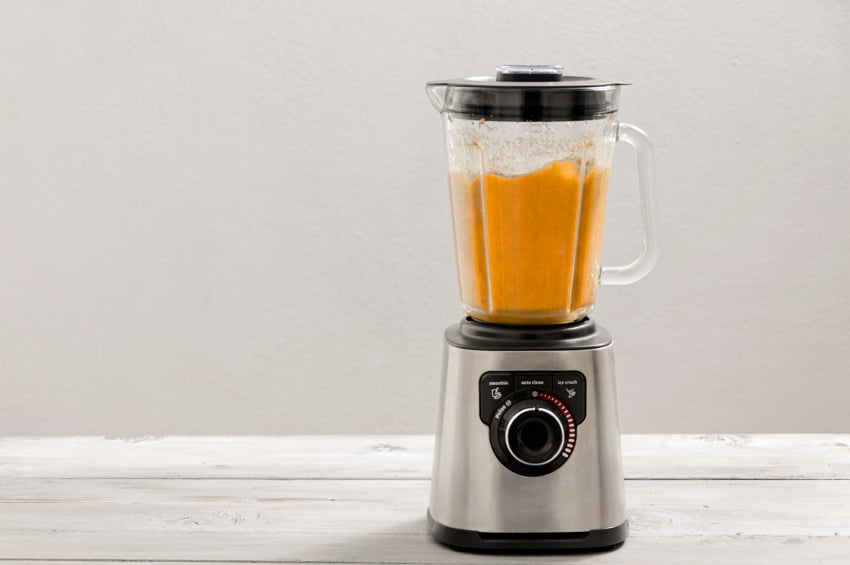
Blender sizes can vary greatly from having as little to one cup to as much as 14 cups. When it comes to buying a blender based on this category, it’s important for you to determine way ahead of time what you will actually need.
If you have an issue with storage space, perhaps it would be nice to go for something that’s a little smaller and more compact, as these blender types are essential small kitchen appliances to consider.
However, if space isn’t an issue and you have a need for high-capacity appliances, it wouldn’t hurt to get a much bigger blender either. It all boils down to what you will actually need and how much storage space your kitchen space will be able to accommodate.
How To Choose A Good Blender
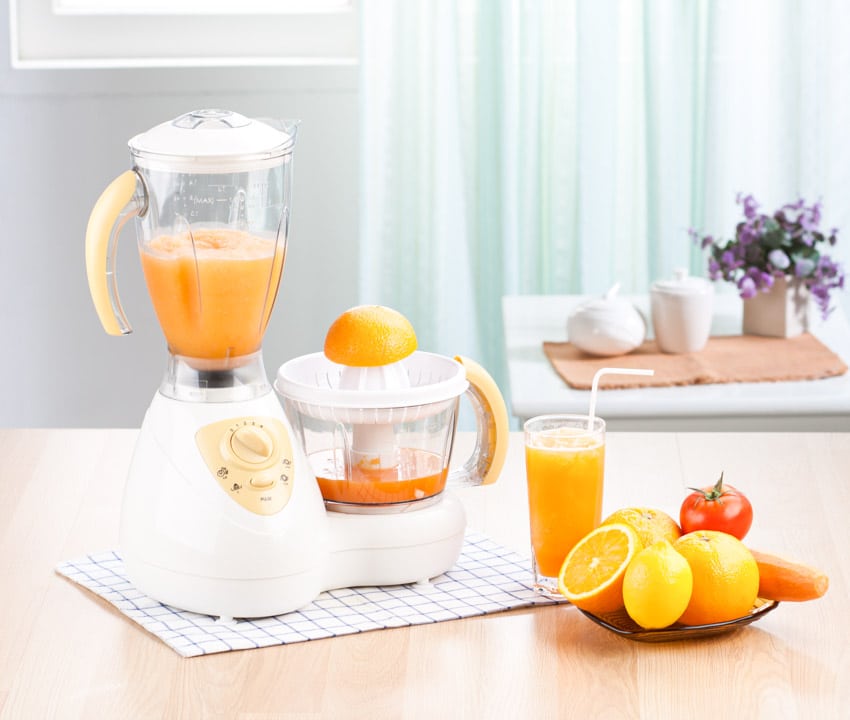
Choosing and buying a great blender to keep at home isn’t nearly as complicated as you would probably think. Sure, there are a lot of add-on features to educate yourself about .
The thing is, this isn’t something that a great brochure or a good salesman will be able to fill you in on. Ultimately, here are the basic things to keep in mind so that you’ll be able to pick out a blender that will turn out to be perfect for you and for your home:
The type and quality of blades included: What you need to keep an eye out for are stainless steel blades that are preferably diamond-cut. These blades are easy to operate. They are also hygienic and much recommended since you are blending out food ingredients.
The jar material: The best recommendation, of course, is to pick out a glass jar that’s categorized as polycarbonate. Glass jars ensure that you aren’t consuming any harmful substances that may come out of a plastic jar, for instance. Polycarbonate glass jars are also sturdier compared to regular glass jars. They don’t break as easily and they are bound to last longer.
Blender speed: Always check out a blender’s operational speed. Blenders that have higher speed perform better and churn out much smoother end products.
Jar capacity: A blender’s capacity can vary. Some may be as little as a cup or so whereas others can go all the way up to a capacity of 2 liters. For convenience, it is always better to opt for blenders with a higher capacity as you will be able to produce smoothies and other food materials in one go without any hassle.
Are Blenders Dishwasher Safe
Generally speaking, a lot of the blender jars or pitchers are fairly safe to stick right into a dishwasher. Still, it would be best if you consult the manufacturer’s instructions just to be on the safe side. Also, it is already a given that anything connected to electricity, such as the base and the like, would automatically not be safe to put inside the dishwasher.
Can Immersion Blenders Crush Ice
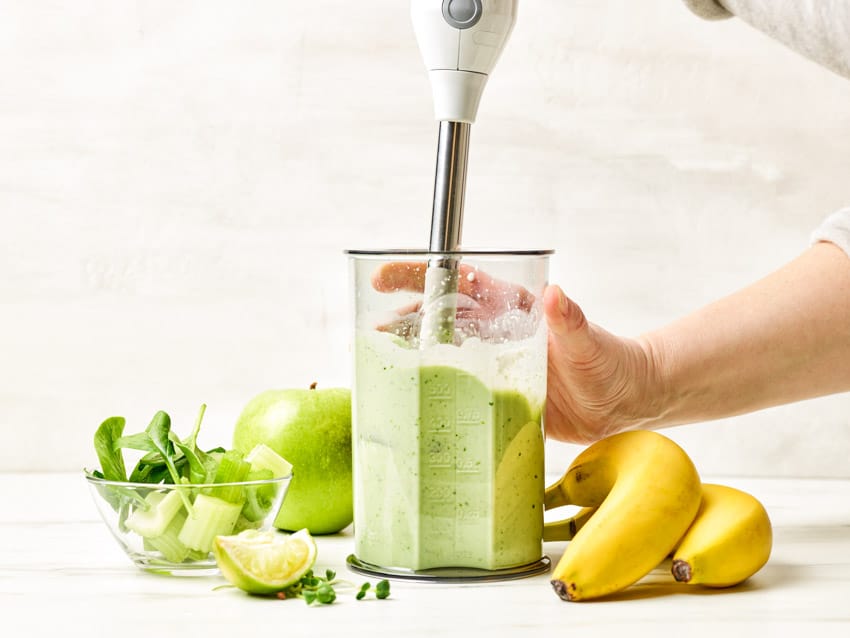
Absolutely not. Immersion blenders are meant to puree soft foods, to turn them into soup or a similarly viscous fluid. Ice is not one of them. Attempting to crush ice with the use of your immersion blender could end up ruining it. Use a jar blender for ice-crushing instead.
See more related content in our article about the best kitchen appliance storage ideas on this page.

